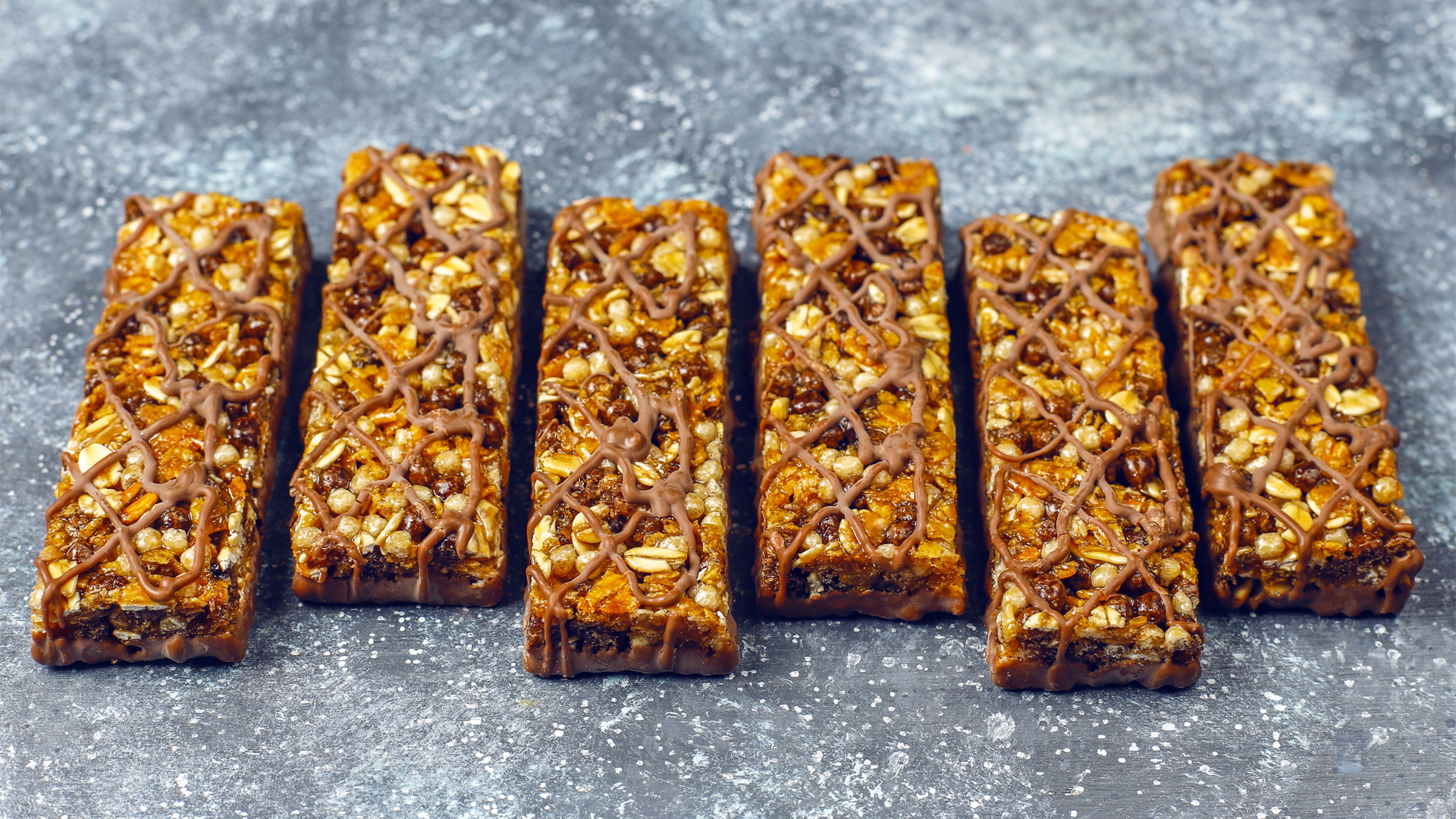Meal-replacement bars have become increasingly popular in recent years as a convenient and healthy option for people on-the-go. These bars are designed to provide a balanced mix of macronutrients, vitamins, and minerals, making them a convenient and practical alternative to traditional meals. They are often marketed as a quick and easy way to get the nutrients needed to support an active lifestyle, and as a way to maintain a healthy weight.
Meal-replacement bars have come a long way since their introduction in the 1960s. Today, they are available in a wide range of flavours and formulations, from low-calorie options to bars that are high in protein and fiber. In recent years, meal-replacement bars have gained popularity among athletes, busy professionals, and anyone looking for a quick and healthy meal option.
Evolution of Meal-Replacement Bars
Meal-replacement bars have come a long way since they were first introduced in the 1970s. Today, they are an integral part of the nutrition industry, offering a convenient and healthy option for people on the go. In this section, we will explore the historical context and technological advancements that have led to the evolution of these bars.
Historical Context
Meal-replacement bars were first introduced in the 1970s as a way to provide astronauts with a convenient and nutritious alternative to traditional meals. These early bars were often dry and unappetizing, but they provided the necessary nutrients for space travel. Over time, they became popular with athletes and fitness enthusiasts who were looking for a quick and easy way to get the nutrition they needed.
In the 1990s, meal-replacement bars became more mainstream, with companies like Slim-Fast and NutriSystem introducing their own versions of the bars. These bars were marketed as a way to lose weight and were often used as a replacement for one or two meals a day. Today, they are available in a variety of flavours and are used for a variety of purposes, including weight loss, muscle gain, and general nutrition.
Technological Advancements
The evolution of meal-replacement bars has been driven by technological advancements in food science and manufacturing. In the early days, they were made using simple ingredients like oats, nuts, and dried fruit. Today, however, they are made using a combination of whole foods and processed ingredients that are designed to provide a complete and balanced meal.
One of the key technological advancements in the production of meal-replacement bars has been the use of protein isolates. Protein isolates are a highly concentrated form of protein that is extracted from whole foods like milk, soy, and peas. These isolates are used to boost the protein content of meal-replacement bars, making them an ideal choice for athletes and fitness enthusiasts who need to consume large amounts of protein to support muscle growth and recovery.
In addition to protein isolates, meal-replacement bars also contain a variety of other ingredients, including vitamins, minerals, and fiber. These ingredients are carefully selected to provide a complete and balanced meal that meets the nutritional needs of the consumer. Many meal-replacement bars also contain added sweeteners, such as sugar alcohols or stevia, to improve the taste and texture of the bars.
Overall, the evolution of meal-replacement bars has been driven by the need for a convenient and healthy alternative to traditional meals. With the help of technological advancements in food science and manufacturing, they have become a popular choice for people who are looking to improve their nutrition and maintain a healthy lifestyle.
Nutritional Impact of Meal-Replacement Bars
Meal-replacement bars have become increasingly popular in recent years as a convenient and quick way to consume a balanced meal. These bars are designed to provide a complete nutritional profile, including macronutrients, micronutrients, and dietary fiber. The nutritional impact of meal-replacement bars can vary depending on the brand and type of bar, but they can be a valuable addition to a healthy diet.
Macronutrient Profile
Meal-replacement bars are typically high in protein, which is essential for building and repairing muscle tissue. They also contain carbohydrates, which provide energy, and healthy fats, which are important for maintaining healthy skin and hair, as well as supporting brain function. Their macronutrient profile of can vary depending on the brand and type of bar, so it is important to read the label to ensure that it meets individual nutritional needs.
Micronutrient Fortification
Many meal-replacement bars are fortified with micronutrients, such as vitamins and minerals, to ensure that they provide a complete nutritional profile. These micronutrients are essential for maintaining overall health and preventing nutrient deficiencies. The specific micronutrients included in meal-replacement bars can vary depending on the brand and type of bar, so it is important to read the label to ensure that it meets individual nutritional needs.
Dietary Fiber and Satiety
Meal-replacement bars are often fortified with dietary fiber, which can help promote feelings of fullness and satiety. This can be especially beneficial for individuals who are trying to lose weight or maintain a healthy weight. The specific amount of dietary fiber included in them can vary depending on the brand and type of bar, so it is important to read the label to ensure that it meets individual nutritional needs.
Meal-replacement bars can be a handy and effective way to get all the nutrients you need in one go. They have a balanced mix of protein, carbs, and healthy fats, as well as micronutrients and dietary fiber. Just make sure you pick a bar that fits your nutritional needs and use them as part of a healthy and balanced diet.
Meal-Replacement Bars in Diet Management
Meal-replacement bars are becoming increasingly popular among people who are looking for a quick, easy, and convenient way to manage their diet. These bars are designed to provide a balanced mix of macronutrients, such as carbohydrates, protein, and fat, and micronutrients, such as vitamins and minerals, that are essential for maintaining a healthy body.
Weight Loss and Maintenance
Many people use meal-replacement bars as a tool for weight loss and maintenance. These bars are typically lower in calories than regular meals, making them a great option for those who are trying to reduce their calorie intake. In addition, they are often fortified with vitamins and minerals, which can help to ensure that the body is getting all of the nutrients it needs to function properly.
Convenience for Active Lifestyles
Meal-replacement bars are also a popular choice for people who lead busy, active lifestyles. These bars are easy to carry around and can be eaten on-the-go, making them a convenient option for those who don’t have time to sit down and eat a full meal. In addition, meal-replacement bars are often designed to be filling, which can help to stave off hunger and keep energy levels up throughout the day.
Specialized Diets Support
Meal-replacement bars are also a great option for people who are following specialized diets, such as vegan, gluten-free, or low-carb diets. Many bars are now available in specialized varieties, making it easier for people to find bars that fit their dietary needs. In addition, meal-replacement bars can help to ensure that people following specialized diets are getting all of the nutrients they need, even if they are unable to eat certain foods.
In conclusion, meal-replacement bars can be a useful tool for people who are looking to manage their diet in a quick, easy, and convenient way. Whether someone is looking to lose weight, maintain their weight, or follow a specialized diet, these bars can provide a balanced mix of nutrients that can help to support a healthy body.
Taste
Manufacturers must strike a balance between taste and nutrition to cater to the diverse needs of consumers.
In recent years, meal-replacement bar manufacturers have been experimenting with different flavors and textures to cater to the changing tastes and preferences of consumers. For instance, some manufacturers have introduced savory flavors, which appeal to consumers who do not have a sweet tooth.
Affordability and Accessibility
Affordability and accessibility are also important considerations for consumers. While some consumers are willing to pay a premium for high-quality meal-replacement bars, others prefer affordable options that do not compromise on taste and nutrition.
To cater to the diverse needs of consumers, manufacturers must offer a range of products at different price points. Additionally, manufacturers must ensure that their products are easily accessible to consumers through online and offline channels.





